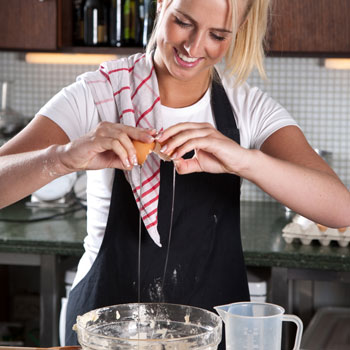Do You Measure Up?

|

An important factor in being a good cook is to understand how to properly measure ingredients. With many recipes, the correct measurement of ingredients can either make or break a recipe. This is especially true in baking where every tiny teaspoon counts!
There was a time when cookbooks did not use terms like teaspoon, tablespoon or cup. Instead, they used phrases like "nice leg of spring lamb" or a "handful" of beans. Sometimes, a recipe would reference the size needed to another item, such as "the size of a walnut." Recipes would also indicate personal preference by terms like "sufficient" salt. After all, what is sufficient for one person may not be sufficient to another.
It wasn't until 1896 when Fannie Farmer introduced the "Boston Cooking-School Cook Book" when exact measurements were introduced. In the
Measurements in the
In the
Dry ingredients are measured by a pint, quart, peck (1/4 bushel), and bushel.

|




